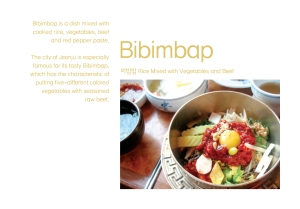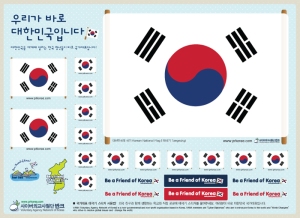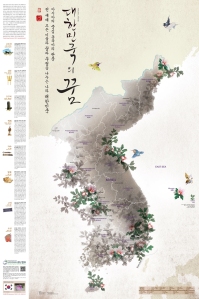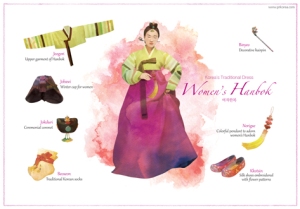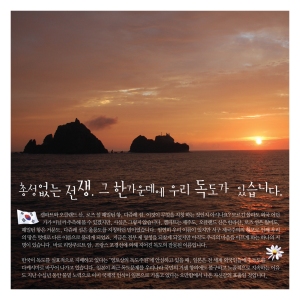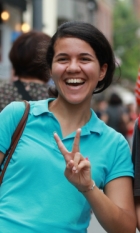Atef Amri – France
1. Please give a brief introduction of yourself.
My name is Atef I am 24, and I am from France, Paris. I am currently a Master’s student at the Neoneoma Business School in Paris.
2. How did you start interning at VANK?
I am a member of AIESEC in France. AIESEC is the world’s largest student run organization with 124 countries involved. It is an organization that provides internships around the world such as paid internships and volunteer internships and through this organization I found VANK. In my business school we are required to do an internship and as I found VANK’s mission statement I decided to apply. I was interested in Asia because I knew little about the culture and I didn’t want to stay only in Paris so that is how I started interning at VANK.
3. What was the best part of working at VANK?
The best part about working at VANK was being surrounded by passionate people. Since everyone here is passionate about their work it really inspires you to work harder. They become curious about your country and that’s how you start to become interested in them and their country. I know I won’t be able to find a place as special and unique as VANK.
4.What would you say is the most regrettable thing?
When I first started to learn about VANK the first thing that interested me was Dokdo. So the most regrettable thing was not having the chance to go to the Dokdo camp because it was held before I arrived.
5. What were your duties as an intern?
The first task I had as an intern at VANK was to do a presentation about France. This presentation made me learn that VANK has an open-minded view that allows them to be curious about other cultures. I started to understand why they were so curious about other countries. It was because in order to have peace within the world there must be an understanding of differences.
Other tasks that I did were to translate videos and also I had the opportunity to translate the entire website “May we speak”. The most important task that I had was to look for contents on the internet about Korea in French. I found mistakes about Sea of Japan instead of East Sea and also Takeshima instead of Dokdo. After I found these mistakes I made an excel document of the websites and then I started to email these websites and inform them of their mistakes. Currently, I have started to get some feedback from these websites saying they will change Sea of Japan to East Sea. I also got to analyze some similarities and differences of France and Korea which was interesting. Lastly, I had the opportunity of being interviewed on different occasions.
6. Was your internship experience as you expected? Why or why not.
My internship experience was better than I have expected. Before interning here I thought that the work would be repetitive, but the tasks at VANK were diverse and everyday was different for me. I was able to do my work a little every day. Also, I never got bored because in France internship is perceived to be difficult and long but at VANK they allowed me to have new experiences every day.
7.What have you gained from your experience as an intern?
There are two main things that I have gained from interning at VANK, leadership and better communication skills. As a business student I had many presentations but through VANK I had the opportunity of speaking at a conference and I also presented at Sugang University about my experiences in Korea.
8.Describe some of your short-term and long-term goals.
My short-term goal is to go back to school and to study hard. Also, I have to finish 2 more years of my masters program. My long-term goal is to have an international career. I have always been interested in different cultures and I want to travel to different countries, especially in Asia. I would love to start my international career in Asia and stay there for two years then travel to a different country.
On a side note my hobby is sailing, which I love. I want to sail around the world in the Clipper race which lasts for one year. After graduation and before my professional career life I would like to participate in this race.
9.Is there anything you would like to say to the future international interns?
I would like to tell them to not be lazy because time goes by fast. Since time is limited go out to see the city and learn to be curious. Always ask questions about the food and culture or about anything such as tasks. Enjoy your time here and don’t be scared to try new things.
10.Before you came to Korea what was your impression of Korea?
Basically, all I knew about Korea was that it was a very far place. In France I knew nothing about Korea. French textbooks don’t have context about the different countries in Asia. I only knew the simple and basic things such as the country is divided; Samsung is Korean, and Kpop.
11. What do you think about Korea, now that you have been here for 7 weeks?
Korea is the soul of Asia. It truly is a beautiful country and people here are all nice, welcoming, and warm. Even on the streets people are willing to help me find directions. Sometimes in Paris people are so busy with their lives that they often forget to help others. Seoul is definitely a city that never sleeps; it is so different from Paris because shops usually close early. However, in Seoul a lot of shops and stores are open late into the night. Also, the food is amazing. In Paris I ate Chinese food so I was not cautious about trying Korean food. I also really like spicy food so my favorite Korean food is army stew.
12.What is your most memorable thing about Korea?
The most memorable thing about Korea is the architecture. How the old traditional houses beautifully blend in with nature. In Paris you cannot see buildings and nature together but, in Korea you can see the culture within the city. In Korea, tradition and modernization have a good balance.
13. After working here what kind of place do you think VANK is?
To me VANK is home and family. My experience here has been greatly shaped by these amazing people. Everyone here is like family and I was honored to have been part of it.
14.Is there any last words you would like to say to VANK?
I would like to say I will miss everyone here. Time went by too fast and I will always remember my time here. I’m sad to leave but I want to say I love you VANK family.
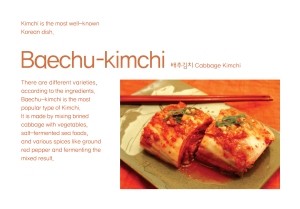 Korean people have been making Kimchi for thousands of years. Kimchi has been engraved in the lives of Korean people. It has become an image to represent a country and one of the foods that foreigners most want to try. There are also over 200 different kinds of Kimchi, including cabbage kimchi the most well-known, radish kimchi, and white kimchi.
Korean people have been making Kimchi for thousands of years. Kimchi has been engraved in the lives of Korean people. It has become an image to represent a country and one of the foods that foreigners most want to try. There are also over 200 different kinds of Kimchi, including cabbage kimchi the most well-known, radish kimchi, and white kimchi. 
